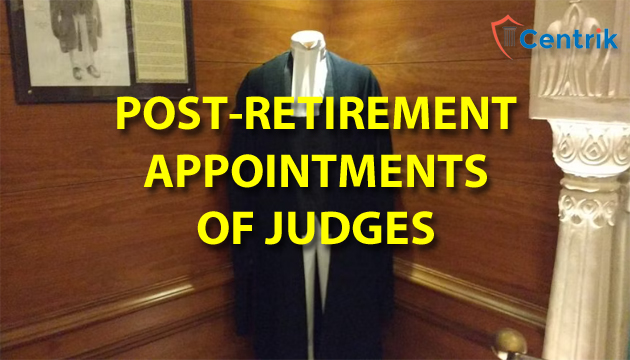
Status as on- 18/03/2023
Former judge of the Supreme Court Mr. Deepak Gupta recently made a statement whereby he chided the judges who look for post-retirement appointments, blaming them for compromising judicial independence.
Notable instances of Supreme Court judges being awarded high-profile portfolios in the immediate aftermath of their retirement include the nomination of CJI Mr. Ranjan Gogoi as Rajya Sabha member, who during his tenure had referred contentious matters such as the Sabarimala case appeal to a Constitutional Bench, thereby deferring a decision that could have had certain ramifications for the ruling party. Yet another case involved the appointment of Justice Arun Mishra, who had publicly showered praise on the Prime Minister prior to his retirement, as the Chairman of the National Human Rights Commission (NHRC).
The demerits of such a practice are self-evident, given that it fosters a quid-pro-quo mentality among serving judges, incentivizing them to tow the government line, in return for plum appointments down the line. This hampers reasoned decision-making among judges and obstructs the ends of the justice-delivery mechanism.
Rather than casting aspersions on the character of such judges and those who appoint them, however, it would serve us better to examine the structural reasons that perpetuate this unholy nexus. Firstly, the retirement age of Supreme Court judges (except that of the Chief Justice of India) at 62 is quite low, as per modern standards of living. This leaves them with many years of productive service still left in them at the time they vacate their posts, creating a demand which is sought to be met in the form of post-retirement work opportunities in executive and quasi-judicial bodies.
This transition is assisted by the fact that there is no constitutionally mandated cooling period with respect to the post-retirement appointment of judges. Furthermore, most of the institutions that accommodate post-retirement appointees, such as the NHRC, lack autonomy with respect to staff appointment., subjecting them to the whims and fancy of the powers above.
Another contributing factor relates to the victimization of judges. Examples such as that of Justice K M Joseph, who, having passed a judgment in the Uttarakhand High Court adversely affecting the ruling party’s political interests, saw his elevation to the Supreme Court opposed by the latter on flimsy grounds, motivate judges to avoid the stick and prefer the carrot of post-retirement posts by remaining in the good books of the ruling party.
While the process of appointing retired judges to such posts may be suspect, its outcomes may be beneficial; their expertise can balance technicalities with a justice-oriented approach, as in the National Company Law Tribunal. They can also add necessary heft to fledging courts like the National Green Tribunal and help achieve their intended purpose. Appointing upstanding former judges of high moral fiber to bodies such as the Lokpal, moreover, goes a long way in building the credibility of such institutions in the minds of the public.
Finally, there lies the argument that as individuals, serving judges are entitled to their discretionary opinion albeit aligned with the ruling party, and upon retirement, should be free to accept the public posts offered in order to contribute further to public life.
Hence, the solution lies in making systematic changes to minimize disincentives regarding post-retirement appointments, through a defined cooling-off period after retirement and before the appointment, having an open procedure of recruitment to such bodies so that high-profile appointments are justified and properly scrutinized. This will also help draw a fine line between appointments motivated by good governance, and appointments motivated by politics.
Disclaimer: The above article is based on the personal interpretation of the related orders and laws. The readers are expected to take expert opinions before relying upon the article. For more information, please contact us at support@centrik.in.




 join For Updates
join For Updates